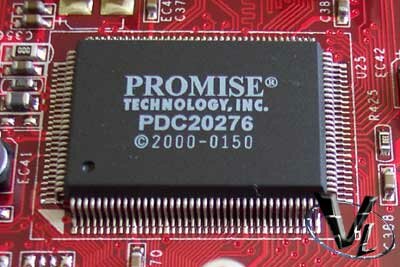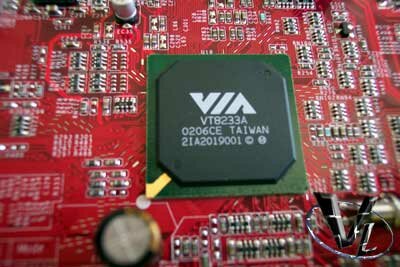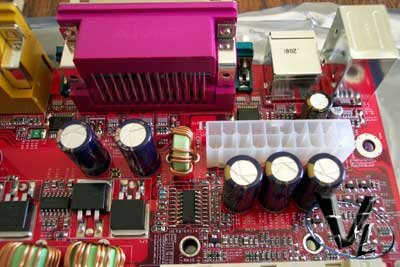|
More Goodness

If you're a RAID junkie like myself, you'll be happy to know that it's present on the KT3 Ultra-ARU. Based on the Promise controller, it doesn't differ much from the one we saw on our Asus A7V266-E, except that ATA133 is supported now. Unfortunently, like our previous experiences, the Promise controller adds signigficantly to the boot times.

The VT8233A controls many of the I/O functions of the motherboard. What it doesn't support though, is USB 2.0. That responsibility falls in the hands of the NEC chip.

Although USB 2.0 is backwards compatible with USB 1.1, MSI suggests that mice and keyboards are kept off these newer connections. The bracket pictured at the lower left provides legacy USB support, as well as monitoring LEDs for visual trouble shooting. The bracket to the right is for the high speed USB 2.0 devices.
 
Unfortunently, we do not have USB 2.0 devices here, so we weren't able to test the performance.
Rounding things out is the sound. I've always tried to stay away from onboard sound, but after our last few motherboard reviews, it appears that onboard audio is making a comeback. I tested some MP3s with my Logitech z560 THX speakers, and would be hard pressed to tell you if it sounded worse than my Audigy card. Truth is, it was pretty good.
  
A few rounds (hours) of Jedi Knight 2, and I'm concluding that they're a viable replacement for an add-in audio card. Now, I have a fast machine, and the onboard audio was chewing up about 7% of my CPU resources. For comparison's sake, my Audigy takes up about 3%.
Installation Notes
Everything was neatly laid out, and the board only requires 6 mounting screws to install. One thing that did bother me was the ATX power connection placement.

It was actually a bit tricky to get into there, and depending on how long your cables are, it may be wise to invest in some zip ties to keep the cables out of the way. My power cable ran right across the top of my heatsink, and I'm sure it'll do the same for a few of you.
One important area that's becoming a problem for many users is physical compatibility. It seems many manufacturers said to heck with it, and chucked every specification manual out the window. I'm happy to report that the two most glaring problems, heatsinks and video cards, are a non-issue here.
  
For the heatsink, there were some capaciters that seemed a little too close for comfort, but using our MCX462 as a test subject, we didn't encounter any problems. The GeForce 4 Ti4600s, although within AGP 2.0 specifications, have been having problems with some manufacturer boards. One capaciter looked like it would cause a problem, but it didn't, and all went well with the rest of our setup.
Previous Page - The Board
Next Page - The BIOS
|
